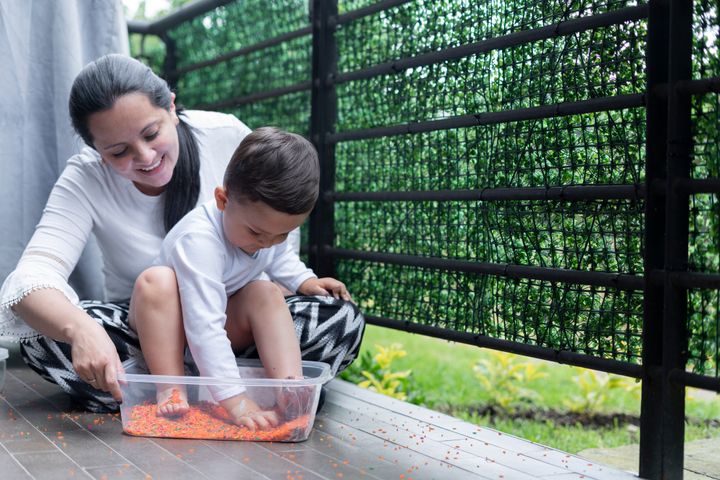
While Pinterest and TikTok parenting trends seem to come and go, the sensory bin seems to be much more than a fad.
Made with bits and pieces found in the home and kitchen, sensory bins can provide a wealth of fine motor and concentration skills to children without costing parents too much.
Plus, during a cost of living crisis, an easy, affordable education tool is ideal.
What is a sensory bin and how to get started?
Web MD said: “A sensory bin is a shallow container that combines filler material and various small odds and ends.
“You fill the bin with a filler material such as sand or rice, then add items from around the house such as spoons or measuring cups.”
It really is that simple.
Marissa Penny, a paediatric occupational therapist shared her tips for getting started. In a TikTok video, she said: “I have never met a toddler who did not love this super simple sensory bin.”
First, she filled a tub with rice and placed an empty cup in it. Penny then used a spoon to scoop rice into the cup and said that this helps with grasp and motor control.
She then hid pom poms within the rice and said that children can either use their finger and thumb to pick them up, or try a utensil like tongs for an ‘added challenge’.
Then, the cup can be used to scoop and pour the rice to create ‘soothing sounds’ and visual input, while also working on hand and wrist movements. The child expert said this is an ideal time to help toddlers that struggle with spoons to practice their skills.
Finally, Penny recommends creating a puzzle or using a shape sorter with the sensory bin to improve cognitive and visual motor skills.
Sometimes getting back to basics is best!